Years ago the wooden mast in our Drascombe Lugger was getting wear marks where it contacted the wooden partner/thwart. The manufacturer didn’t put leathers on the masts to protect them and the partners didn’t have room for adding leathers, so I needed another solution. At about the same time, Audrey brought a roll of tape home from a theater event; it was gaffer tape, used to secure cables to equipment and stages. On that day we welcomed Pro Gaff Gaffer Tape to our small-boat rigging kit.
Duct tape is a staple in the kit for shops, camps, and boats, but for many jobs, there’s a better product: gaffer tape. It’s made of heavy cotton fabric and, unlike duct tape, does not have a slick polyethylene coating. It adheres with a synthetic rubber adhesive (SRA) that does not leave residue behind, as duct tape’s adhesive does, when it is removed. The tape has a nice look and feel, and does not become oily and sticky like some other types of multi-purpose tape. Gaffer tape has excellent adhesion and sticks well to the wooden, metal, and fiberglass surfaces on our fleet of boats, and it conforms to many different shapes.
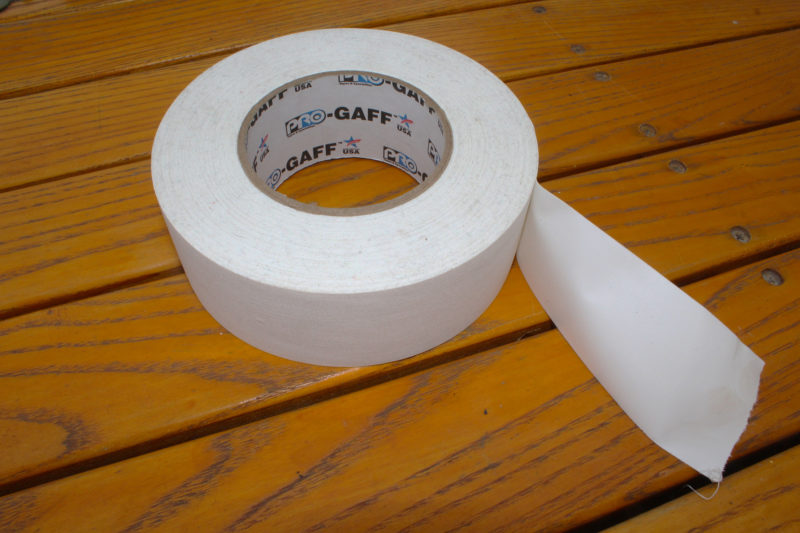 SBM
SBMPro-Gaff’s gaffer tape comes in white, black, and 18 other colors.
The tape’s tensile strength is rated up to 50 pounds per inch of width, the equal of the best duct tapes. Gaffer tape protects a variety of components, it is easy to remove without damaging the surfaces, and it resists abrasion itself. The tape is easy to tear by hand, no scissors required, both off the roll or along its length to get a piece at just the right width. Gaffer tape has a matte finish, so it does not reflect light, and it is also tolerant of UV light.
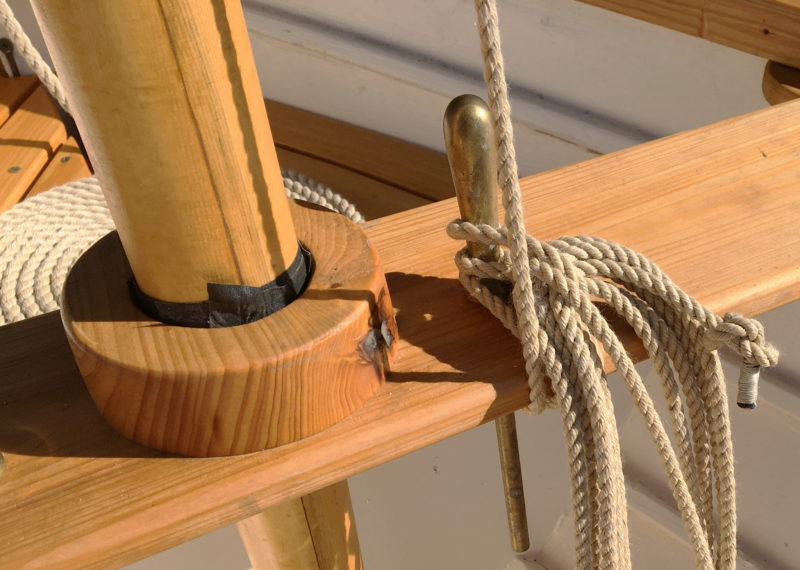 Kent and Audrey Lewis
Kent and Audrey LewisThe tape was used instead of leather to protect a mast where it bears against the partner.
After we taped the lugger’s mast to protect it from abrasion by the partner/thwart, we were pleased by how well it stayed in place and survived the wear. We then used the tape to wrap a sprit where it rubs on our Penobscot 14’s mast.
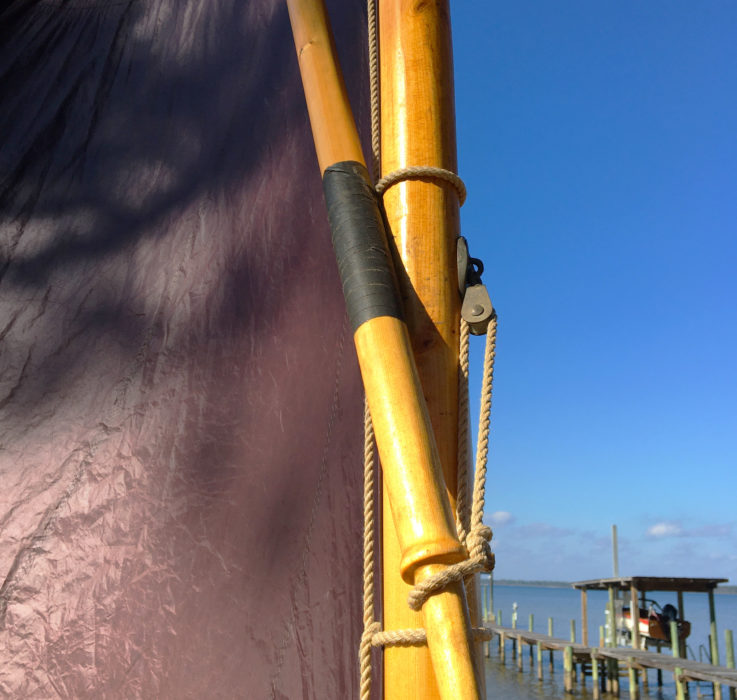 Kent and Audrey Lewis
Kent and Audrey LewisA spiral wrap of black gaffer tape reduces the chafing between a sprit and a mast.
Another bit of tape reduces wear and abrasion where the tiller bolt on our wooden Sunfish rubs the deck; we also taped the tiller extension, which gave it a good grip and a nice soft feel. We have used the tape as a spacer between dissimilar metals of the bronze gooseneck and aluminum boom on our Sunfish. Gaffer tape works great to wrap clevis pins and keeper rings to keep them from abrading the sails; we wrapped the bottom of the turnbuckles on our Day Sailer with gaffer tape to keep them upright while the mast is stepped and to prevent snagging the jib sheets under sail.
One of our most frequent uses has been to tape the last 1/2″ of a line, an “Electrician’s Whip,” before we applied a thread whipping.
There are many brands of gaffer tape, and we have been very happy with Pro Gaff’s offerings. Their regular gaffer tape is water resistant, and there is also a waterproof version. It comes in 20 colors—among them a glow-in-the-dark tape that could have interesting applications, and a camouflage tape. Pro Gaff Gaffer Tape is not as ubiquitous or as inexpensive as duct tape, but it is well worth adding to your kit.![]()
Audrey and Kent seek prizes on the shoal waters of Northwest Florida when not taping things with gaffer tape. Their mess-about log can be found at their blog.
Pro Gaff tape is manufactured by Pro Tapes and Specialties and available at selected retailers as well as online sellers.
Editor’s notes
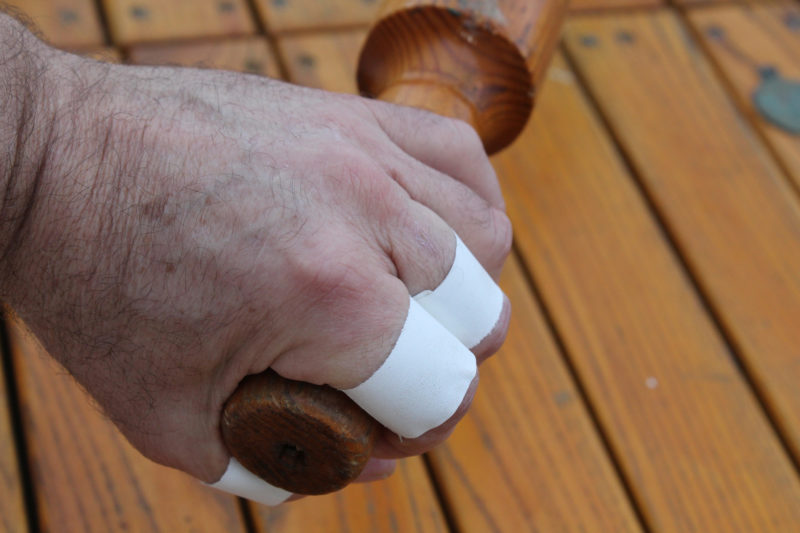 SBM
SBMGaffer tape works very well as a stand-in for first-aid tape, and wraps on tender fingers can ward off blisters at the beginning of a cruise that requires a lot of rowing.
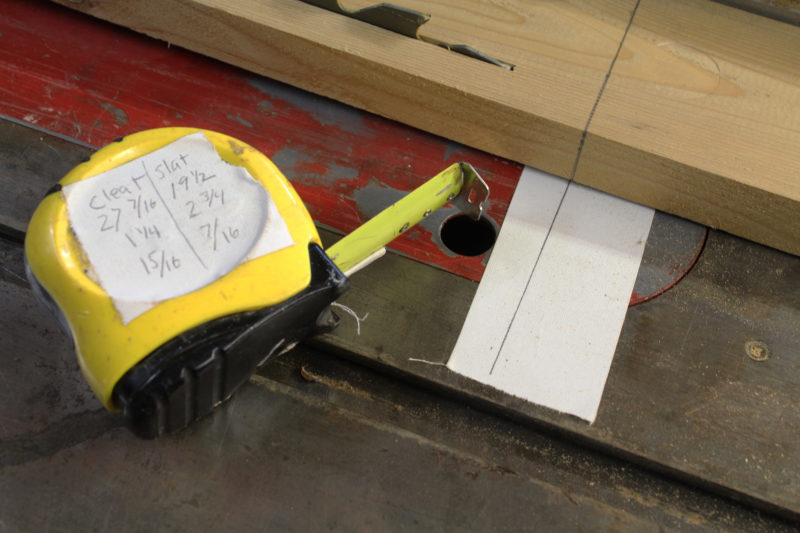 SBM
SBMThe matte, textured surface of the tape takes pen and pencil marks well. The white tape is especially good for making clear, sharp marks. The tape on the table saw has a mark for stopping the cut at the right place on the bottom side of the wood; the gaffer tape on the side of the measuring tape provides a handy, transferrable place for recording dimensions.
Is there a product that might be useful for boatbuilding, cruising, or shore-side camping that you’d like us to review? Please email your suggestions.
Captions: write on tape, bandage
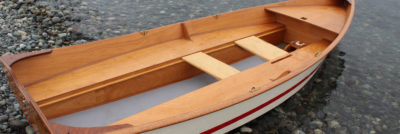


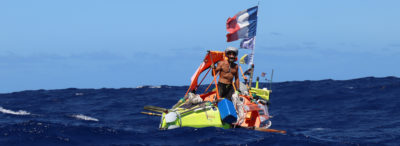
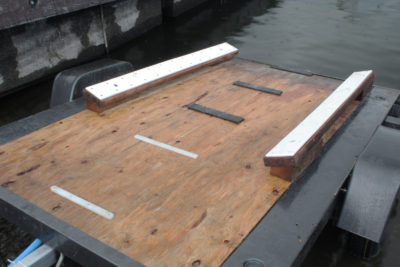
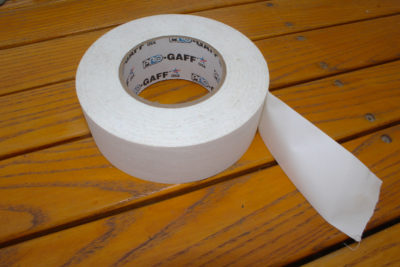
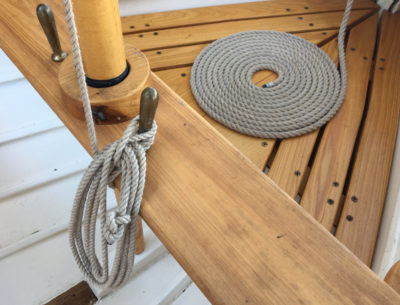
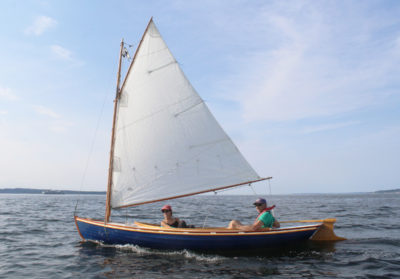
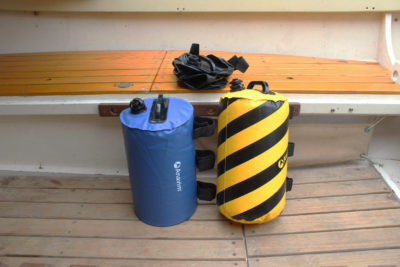
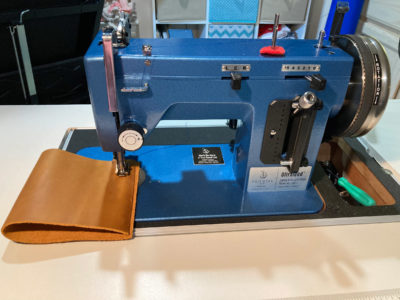
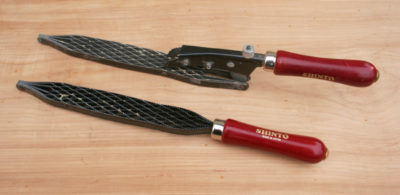
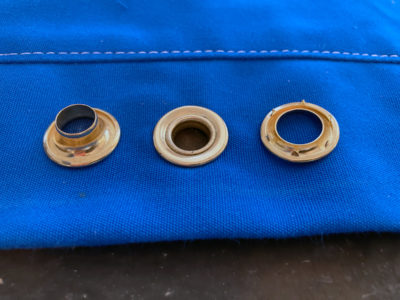
I’ve been using gaffer tape for years. The Day-Glo tapes are especially useful to mark things in low light conditions. I’ve used it on paddle and oar blades but it doesn’t stick well to an oil-based finish.
Might it work for oars instead of leathers? Or as ‘renewable’ leathers?
We have used gaff tape on our oars, it has been on for several years of very light use and still looks new. The regular tape would not stand up to repeated dunkings, but the waterproof tape might.
The Pro-Gaff you are using is some of the best, but that comes at a price, about $35 for a roll. I work as a lighting tech in a theatre, we go through gaff tape like nobody’s business and it is worth every penny. It sticks to most everything, never leaves a residue (unless you leave it on for a month or more) and more importantly, it tears easily when you need only a small piece.
User friendliness is a big part of Gaff tape’s premise. When you are crawling across a floor tabbing a cable down, you do not have the time (or inclination) to cut a piece of tape, being able to grab it between your hands and simply tear it with no real effort is a time and knee saver. Due to this, never put Gaff tape in a sheer situation, it is meant to hold things down not keep them from getting ripped up. That 50 pounds per square inch only works if you cannot tear across the fabric of the tape.
I like fluorescent tape on oars, paddles, and anything else that I need to see during the day or in twilight. Much better than reflective tape which works only at night.
I think you meant to refer to duck tape and not duct tape in your article. Duct tape is metallic with an extremely strong adhesive. Duck tape is the fabric based water resistant tape that comes in may colors.
Thanks, Kurt. The name of the tape has an interesting history. In the research I did, I learned that the original product was made of cotton duck, and therefore called duck tape. That term goes back to around 1902. In the 1950s a version of the tape was used for sealing air ducts and an HVAC (heating, ventilation, air conditioning) company trademarked the name Ductape in 1960. Then in 1971, a new owner of the company trademarked the name Duck Tape. Duck Tape is now a trade name, and “duct tape” is the generic term for the fabric-based tape and is the term you’ll see on the packaging. This tape is not recommended for heating ducts because it can’t take the heat. I know that to be true because the previous owner of my home used duct tape on the heating ducts and it has all peeled away. The tape designed for ducts, oddly enough, seems to have lost its claim on the generic term and is sold as foil tape.
Christopher Cunningham
Editor, Small Boats Magazine